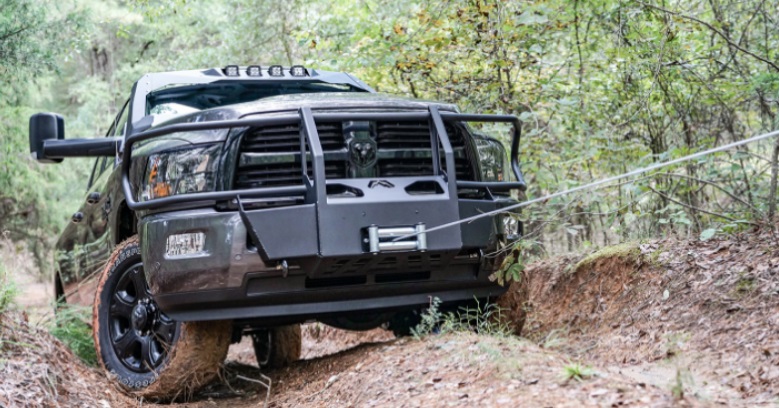Recovery Straps – Don’t Hit The Trails Without Them!

Of all the important safety gear and recovery equipment you carry in your off-road vehicle, none is more essential than a good set of recovery straps.
Lightweight, easy to store, and incredibly strong, a high-quality set of straps will safely get you out of a bind most of the time, especially if you’re traveling without a winch in your trail party.
Chosen correctly, a good set of straps will facilitate recoveries of all kinds so you can get back on the road and enjoy the rest of your day!
How Do Recovery Straps Work?
Also known as kinetic or snatch straps, recovery straps are much more than just a long nylon strap that you can pull things with.
Very different from tow straps that don’t exhibit the special properties of recovery straps, they’re specifically designed to work using extension and compression to help you pull a heavy vehicle out of the mud, off the rocks, or back to the road from wherever it’s stuck.
The straps initially stretch when the recovering vehicle starts moving forward to offer a smooth start, then pull back against that vehicle, compressing smoothly to pull the stuck vehicle forward.
In doing so, the stretching and compressing motion of the strap provides a much safer and effective recovery than trying to do it with a rope or strap not designed to behave this way.
What Can And Can’t You Do with A Recovery Strap?
As useful and versatile as they may seem, kinetic straps of any kind should only be used to pull a stuck vehicle when it’s attached to another recovery vehicle.
That’s it.
Used properly, these straps can make recovery a lot easier than you may initially think; used incorrectly, people could be hurt or things get damaged.
In other words, don’t use a recovery strap around a tree or rock as an anchor point because they stretch.
Don’t use a recovery strap as a tow strap or as a winch extender strap, again because they are designed to stretch for extraction, not tow anything.
Most importantly when using a recovery strap, never connect it to an attachment point other than a frame mounted tow hook.
Avoid trying to attach to a receiver ball, suspension parts or axles, winch hooks, or wrapping it around your bumper.
None of these options are strong enough to withstand the load that a recovery will put on them and doing so is extremely dangerous.
How Do You Choose the Right Recovery Straps?
Performing a successful recovery depends as much on using the right straps as it does using the straps the right way.
As such, these straps are made differently than other types of straps and they should be selected according to their weight rating for safe effective use:
-
Recovery Strap Construction – Unlike other straps that are made primarily of non-stretching polyester or polypropylene, kinetic and recovery straps are made from strong nylon that can stretch as much as 30% of its length without being compromised. This is why these straps will expand initially when the recovery vehicle starts moving forward, then compress after reaching their stretch limit, extracting the stuck vehicle as they do.
- Recovery Strap Weight Rating – Recovery straps must be able to endure a much greater weight load than the weight of the two vehicles involved in the recovery,and the force that the recovering vehicle can put on them. The recommendation to avoid the possibility of under-estimating weights or forces is to purchase straps rated for 4 times the weight of your vehicle.
Don’t Leave Home Without A Good Set of Recovery Straps!
When you go off-roading, there are certain necessities you should bring with at all times to handle unexpected situations and emergencies that might come up.
For you, that might mean a first aid kit, extra water, and protective gear depending on the weather.
For your off-road beast, it means things like a full-sized spare tire, a tool kit, and a set of quality recovery straps.
Tucked away in the back of your vehicle, you’ll barely notice them there amidst the rest of your emergency gear; however, you will definitely notice when you get stuck somewhere if they’re not!